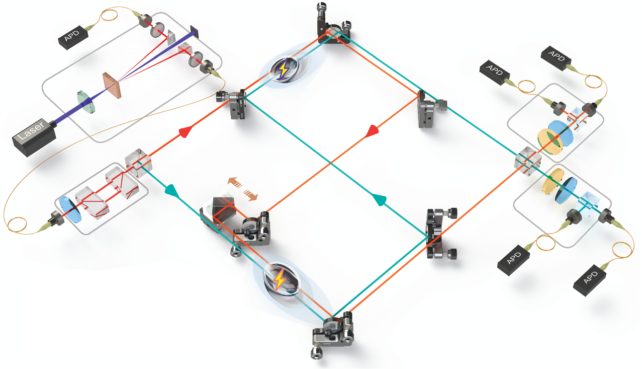In a typical battery, charged ions zip one way through a sea of other particles as the battery recharges, before racing back in the other direction to release the stored energy on cue.
Back and forth the ions go, some getting diverted along the way, until the capacity of the battery is drained, and it loses energy too quickly to be of any use.
But physicists, good on them, are imagining new ways of storing energy in handy portable devices by drawing on a strange quantum phenomenon that twists time, amongst other unusual happenings.
"Current batteries for low-power devices, such as smartphones or sensors, typically use chemicals such as lithium to store charge, whereas a quantum battery uses microscopic particles like arrays of atoms," explains Yuanbo Chen, a physics graduate student at the University of Tokyo.
In their latest work, Chen teamed up with physicist Gaoyan Zhu of the Beijing Computational Science Research Centre, part of the China Academy of Engineering Physics, and colleagues to test the idea of creating a quantum battery that allows for simultaneous charging stages, thereby improving energy storage and thermal efficiency.
"While chemical batteries are governed by classical laws of physics, microscopic particles are quantum in nature, so we have a chance to explore ways of using them that bend or even break our intuitive notions of what takes place at small scales," Chen says.
Chen, Zhu and colleagues certainly aren't the first group to imagine how a quantum battery might work, but they have tested their ideas experimentally in a lab bench set-up full of spaced-out lasers, lenses, and mirrors.
In 2019, a team of Canadian-based researchers laid out a blueprint for a quantum battery that never loses its charge. Their idea, which is still totally theoretical, hinges on a different quantum mechanism: one that involves luring quantum components into a 'dark state' where the material can't interact with, or lose energy to, its environment.
Zhu and colleagues' approach follows on from a quantum phenomenon known as superposition, which is commonly recalled for quantum computing, and is where particles exist in a flurry of possible states until the moment they're measured.
This overlay of possibilities also messes with the natural order of time, researchers have recently shown.
In classical physics and everyday life, events can only occur in a linear fashion or fixed order. Think cause before effect, or event A (flicking a switch) before event B (the light turns on).
In the quantum realm, however, that linear order breaks down and superposition allows for events to unfold along two parallel paths at once. In a way, this messes with time because an event that follows another can also influence the event's outcome as if it came before, because both orders of events, A before B and B before A, are simultaneously true.
"Putting it simply, it has been found that the laws of quantum mechanics allow for quantum superposition of causal orders," Zhu and colleagues explain.
To apply that to energy storage, the researchers realized this strange process using a quantum switch, tested a few different charger configurations, and created a system capable of pulling from two chargers simultaneously.

"We demonstrated that the way you charge a battery made up of quantum particles could drastically impact its performance," says Chen. "We saw huge gains in both the energy stored in the system and the thermal efficiency."
"Moreover, we reveal a counterintuitive effect that a relatively less powerful charger guarantees a charged battery with more energy at a higher efficiency," the researchers report in their paper.
While this quantum 'battery' is more like a network of lasers on a lab bench, and years away from any practical applications, it's still a cool demonstration of the underlying principles and what could be possible sometime in the future – if it hasn't already happened in the past.
The study has been published in Physical Review Letters.
